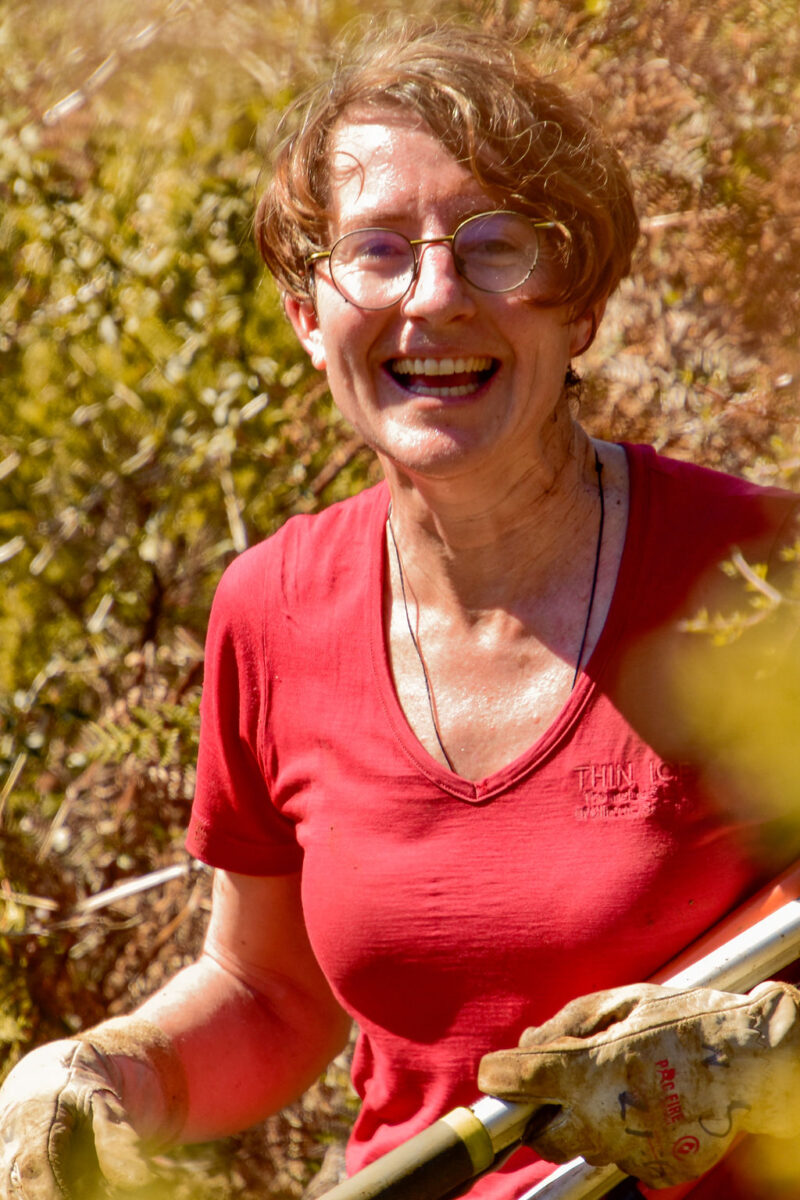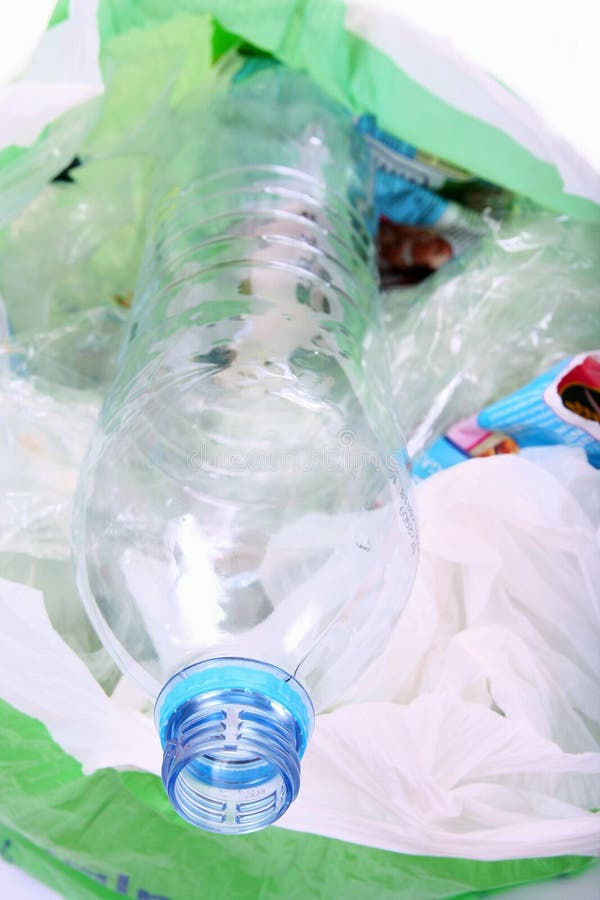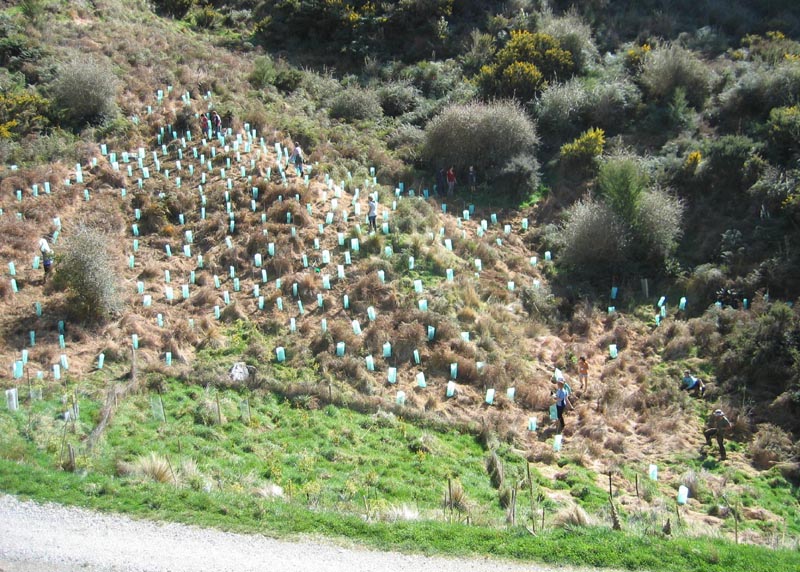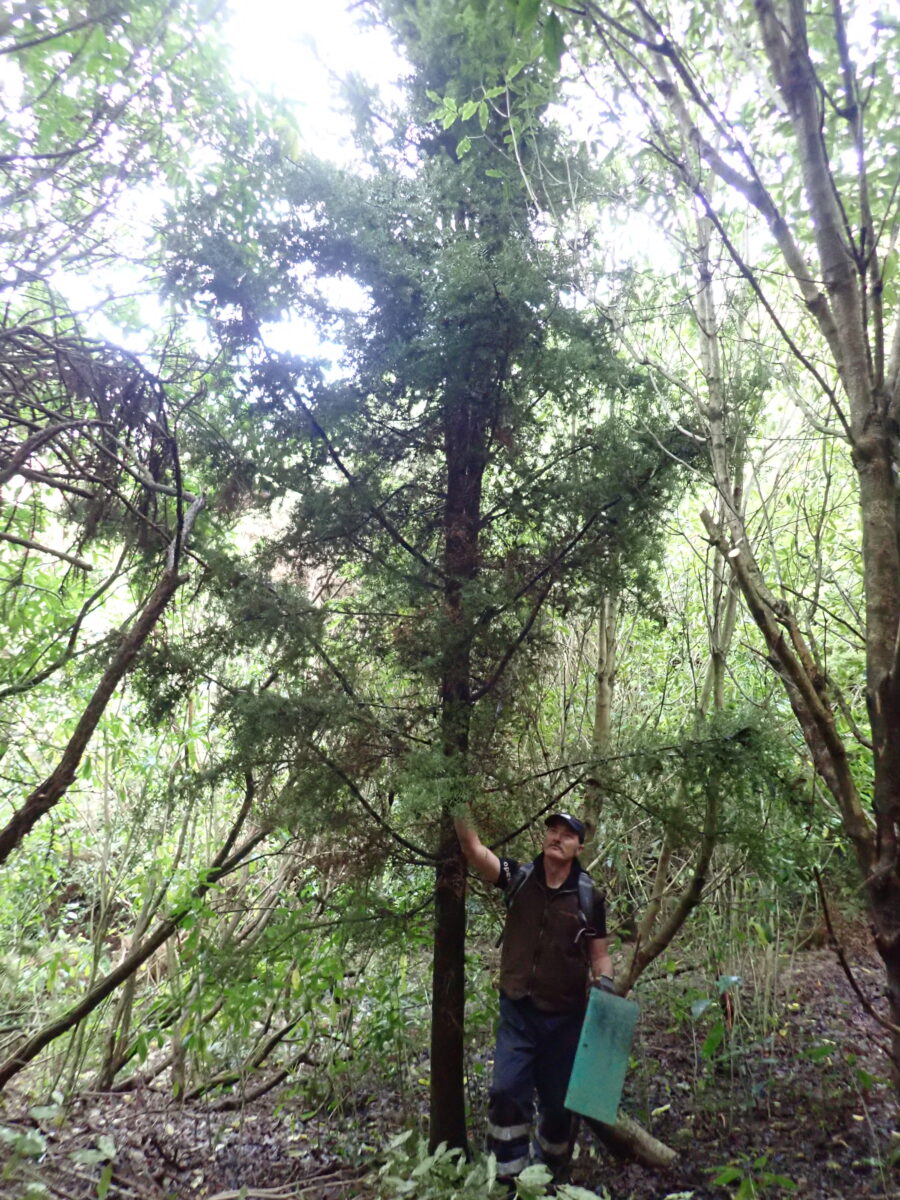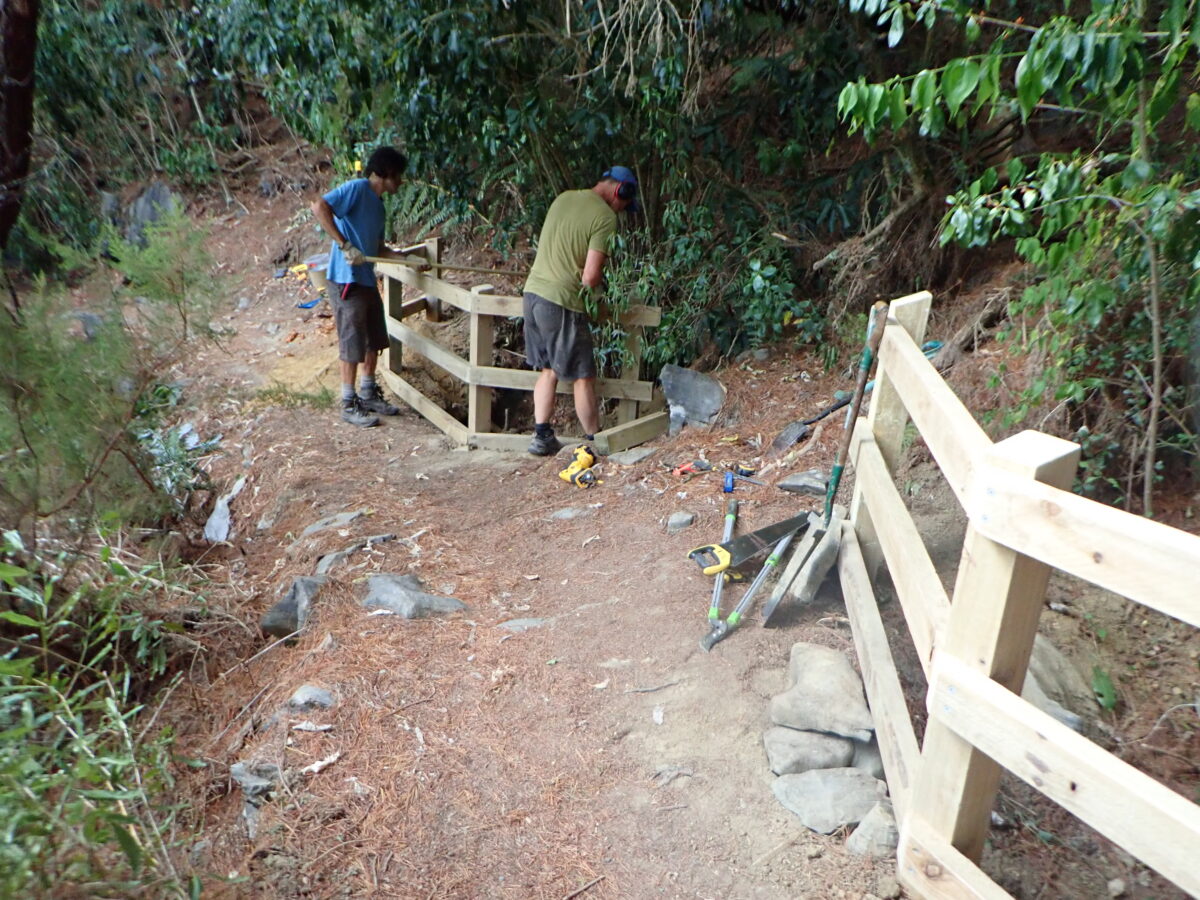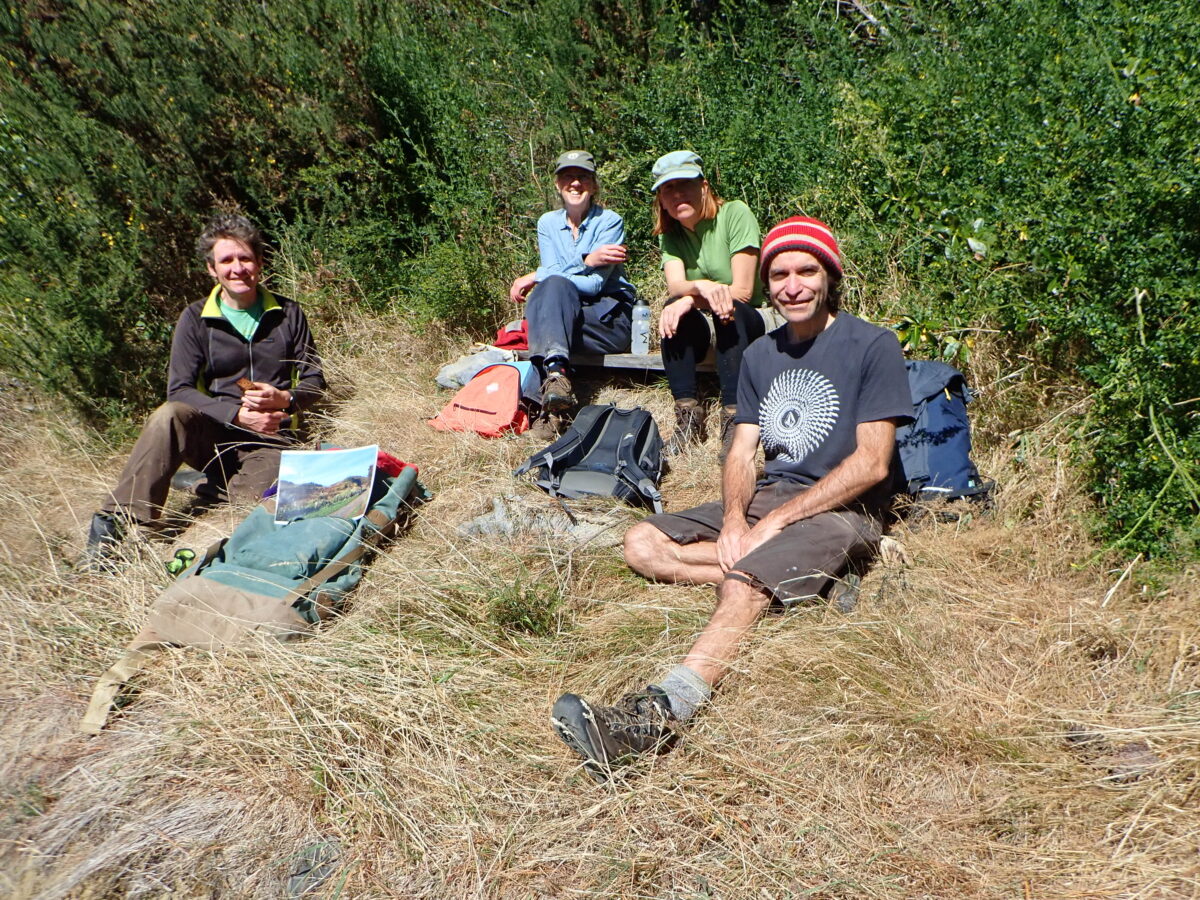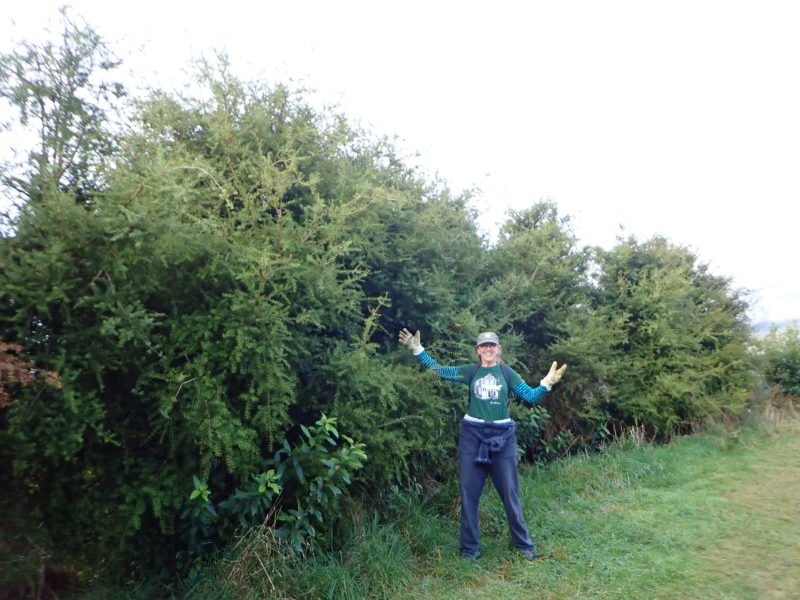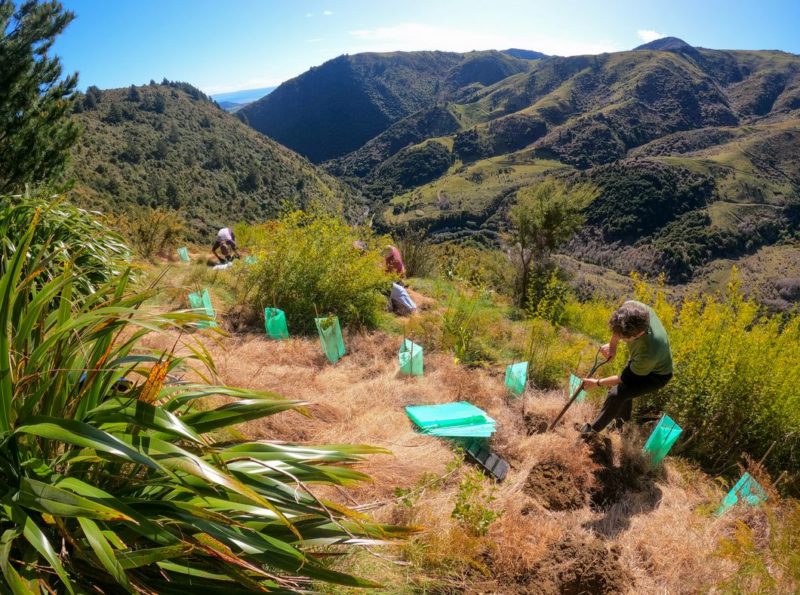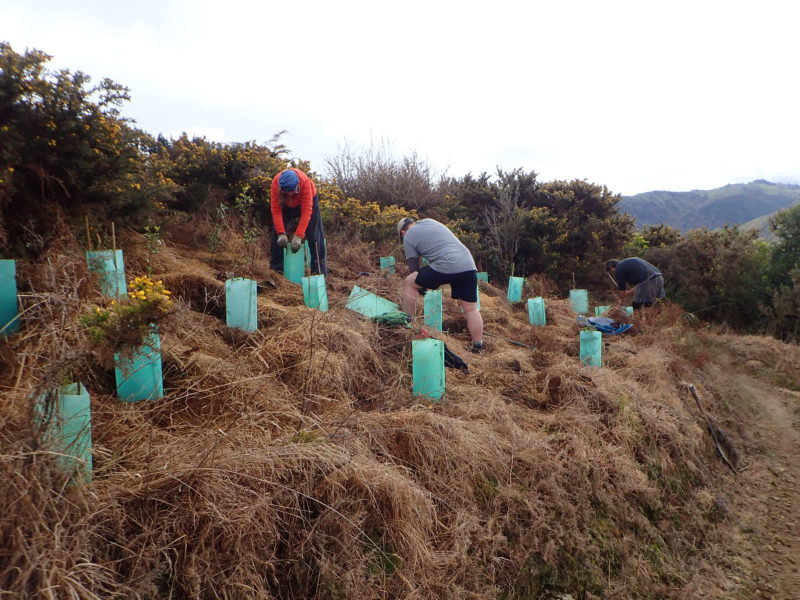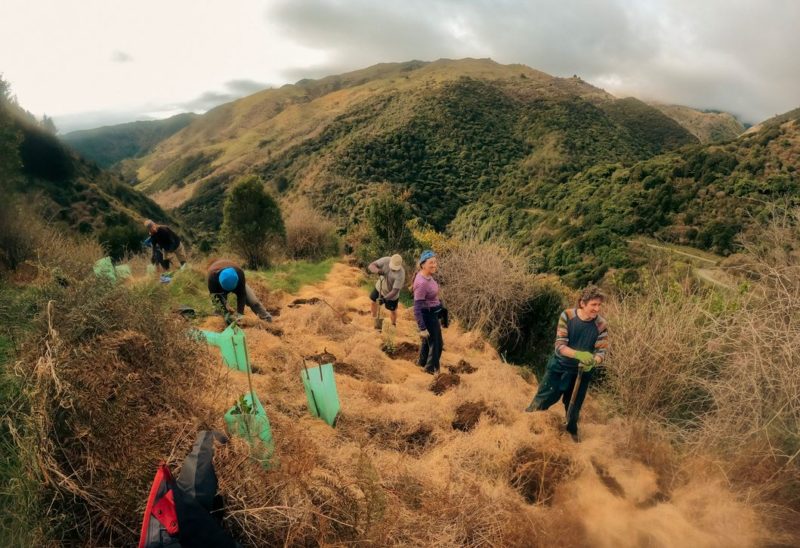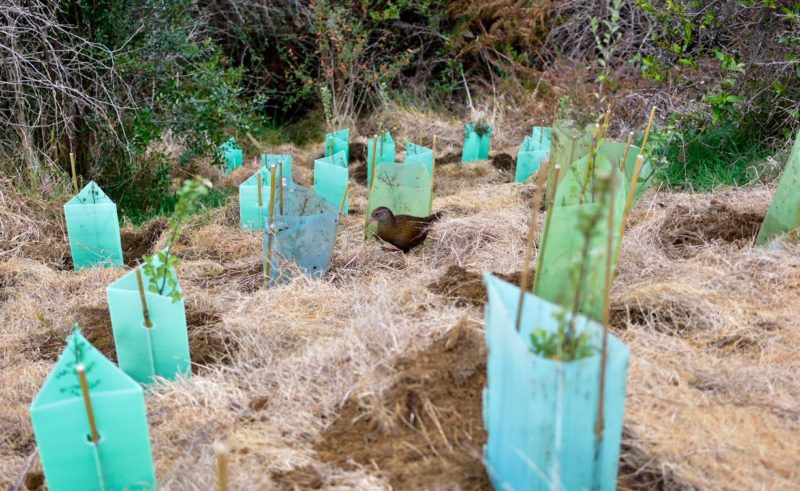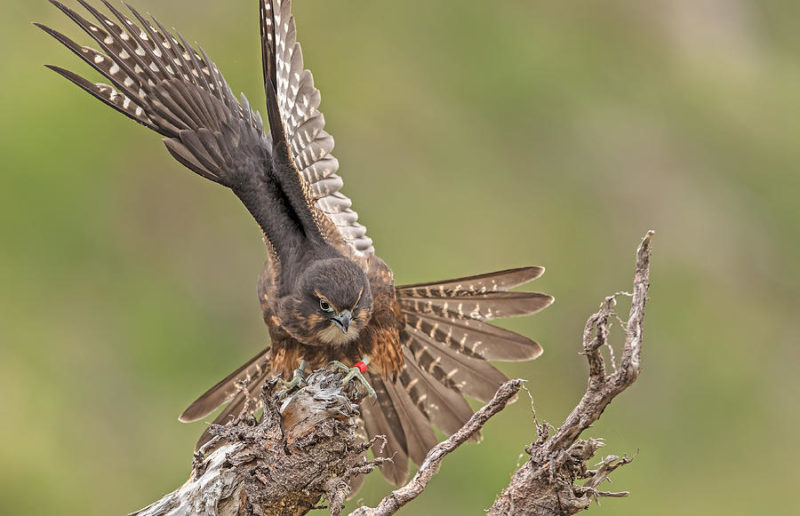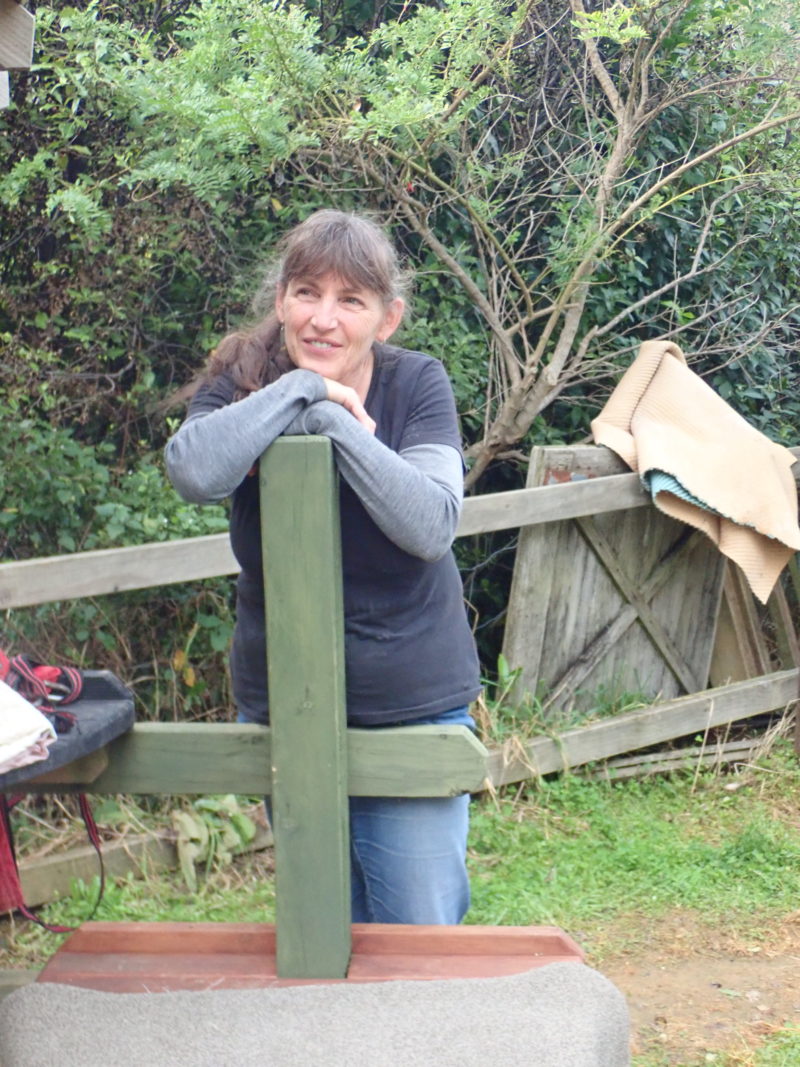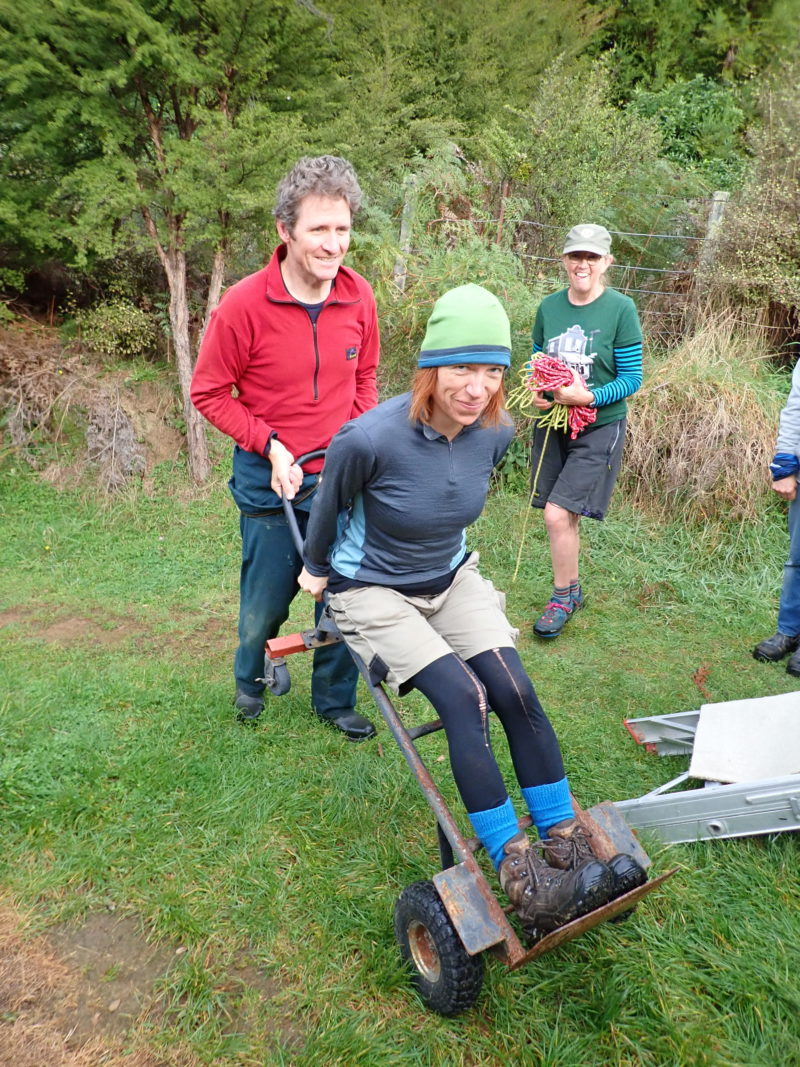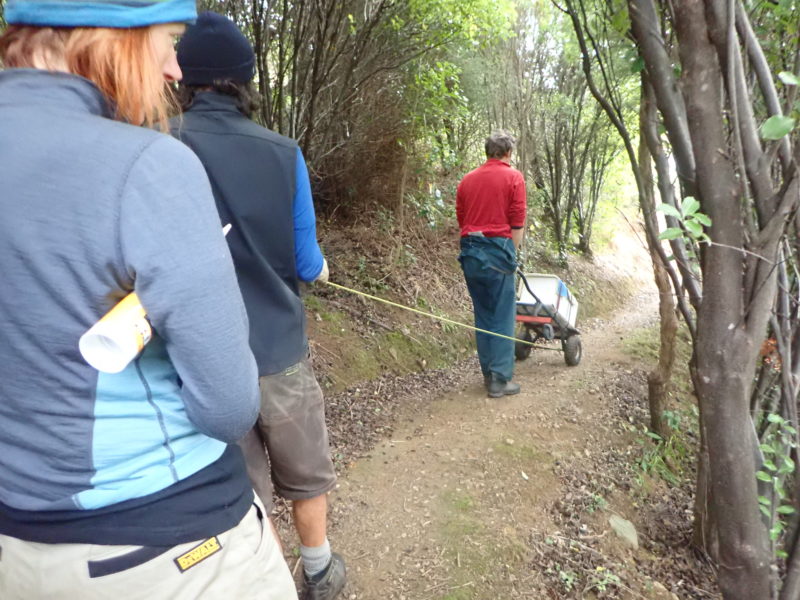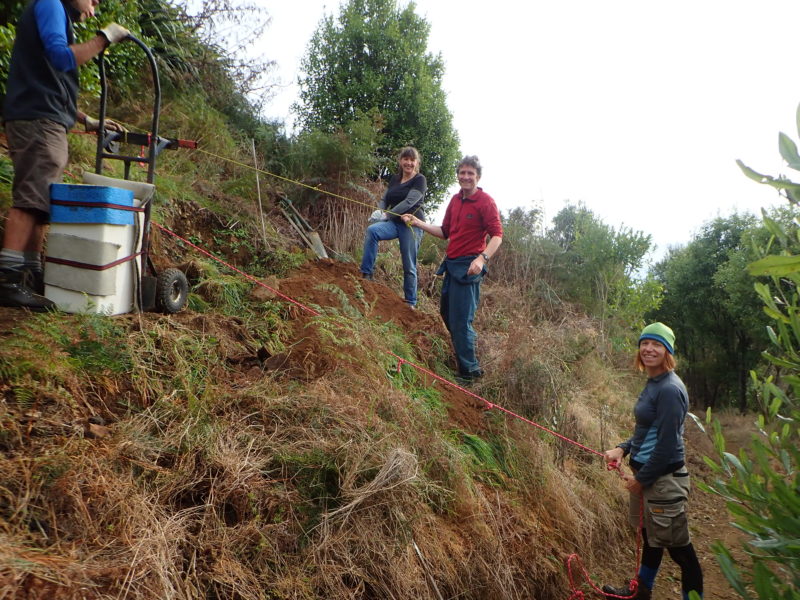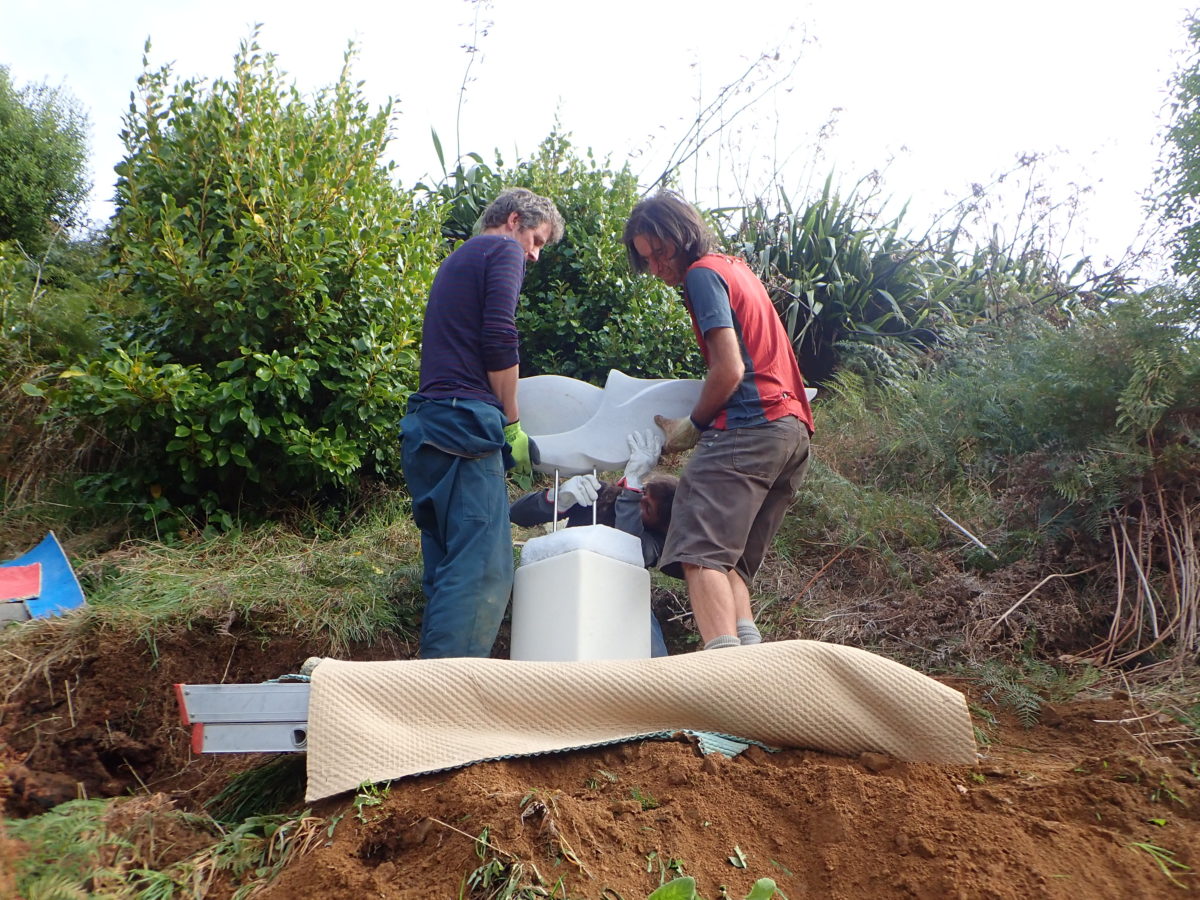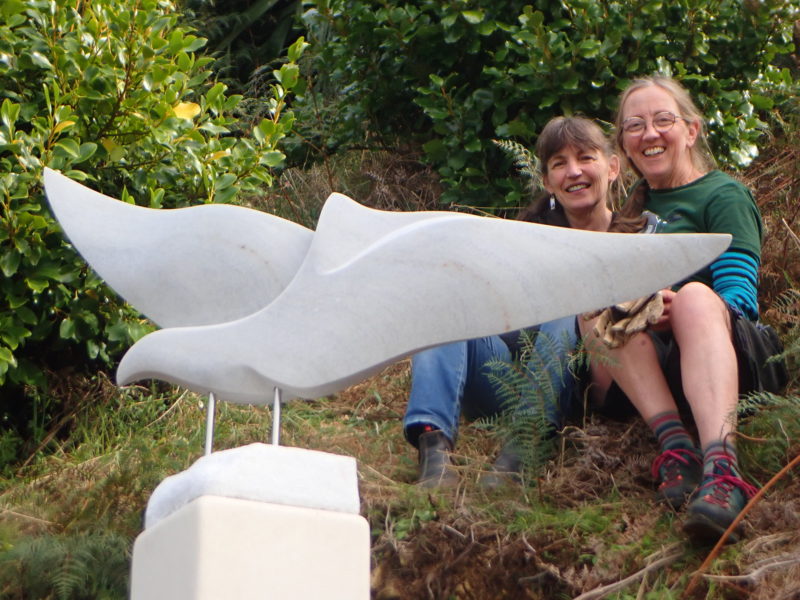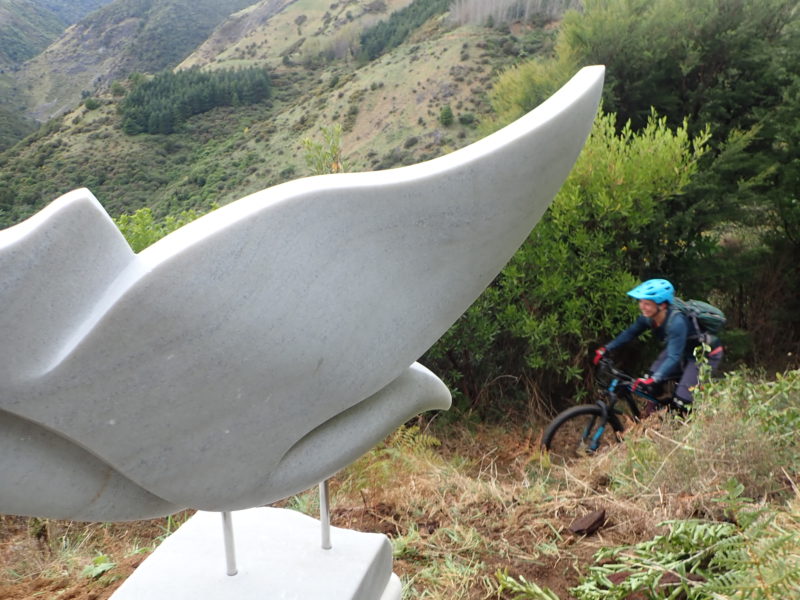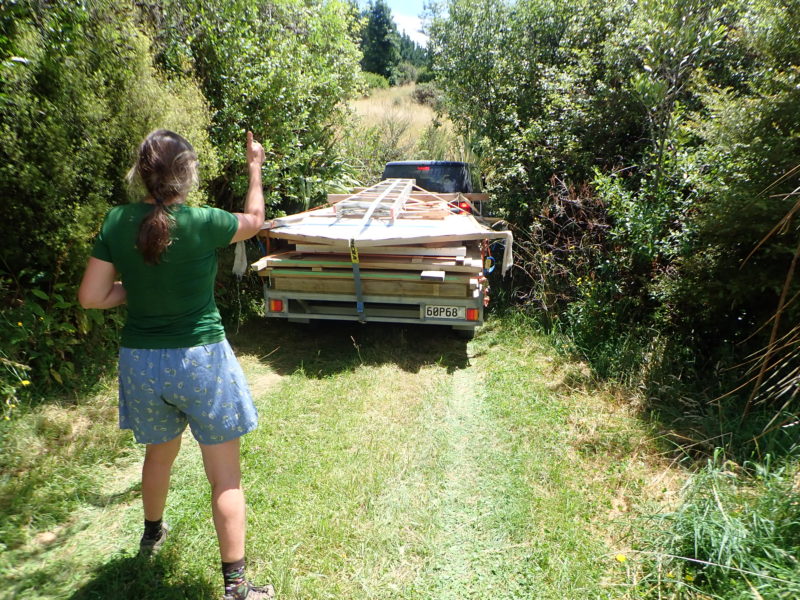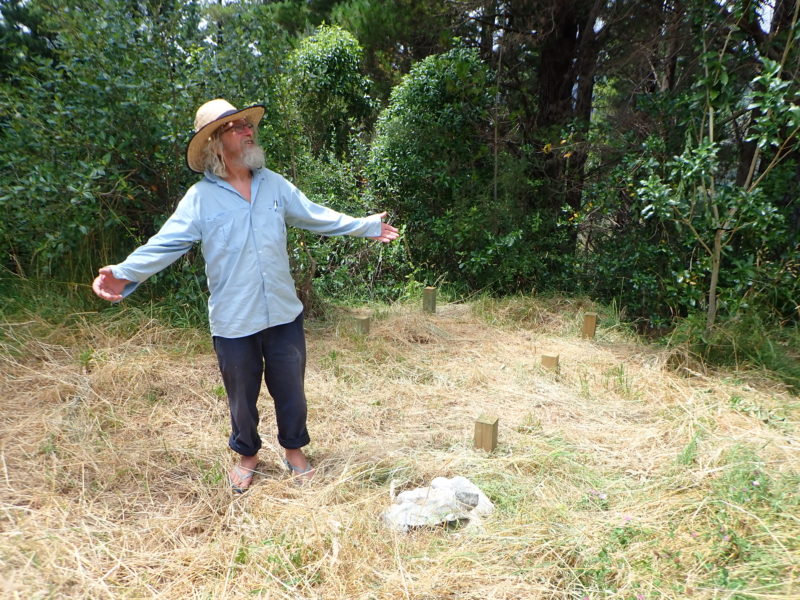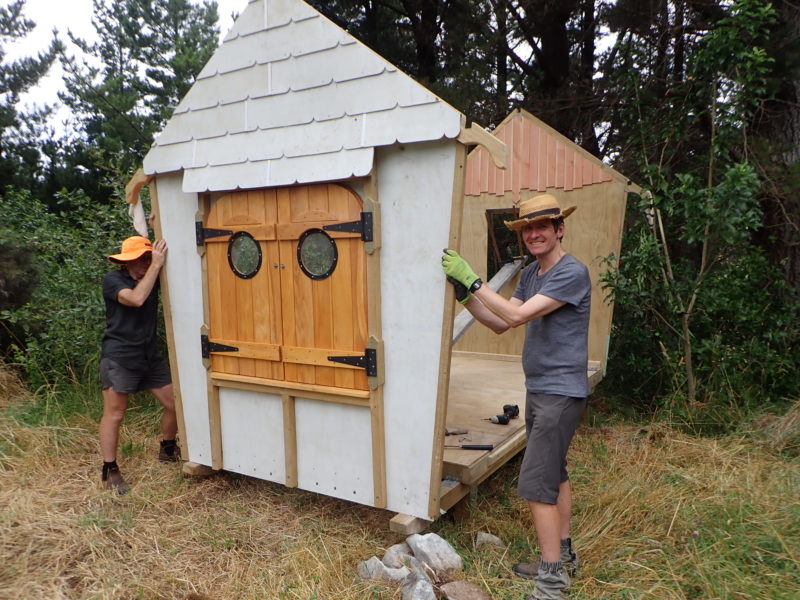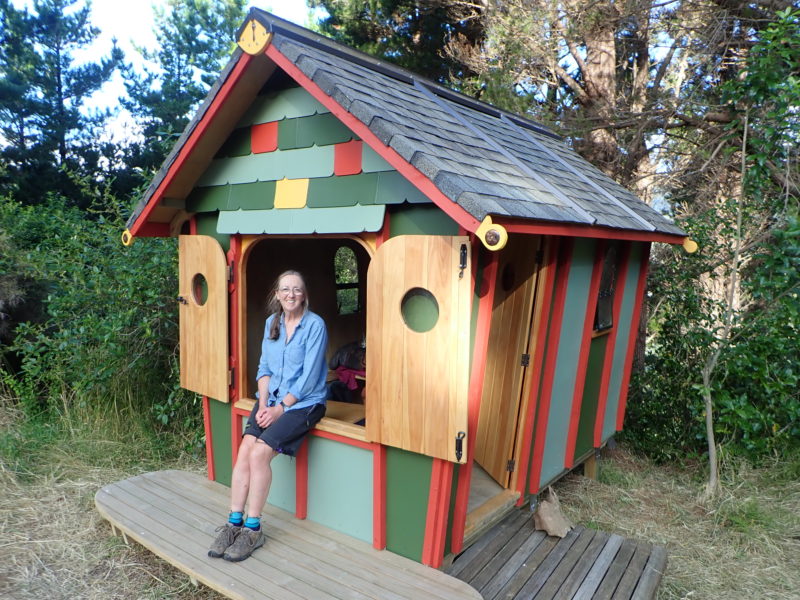After riding the Great Taste Trail and over Gibbs Hill – I landed in Takaka where I stayed for a week helping out at Project Rameka for a conservation vacation.
The first day was a working bee planting some native trees like Rimu, Matai and Totara amongst this immense barberry forest. Barberry looks pretty when it flowers and has really vivid yellow wood, but it’s an invasive species and prevents native species from regenerating in open habitats. There were three different tracks laid out for the planting sites and roughly twenty odd volunteers got stuck in hauling trees and equipment up to get the day started. Another group planted Hinau in places along the Great Expectations track up from the Old Mill Site to help with some stabilisation for the side of the track. It was very steep and slippery in places (even my three years of Pilates classes couldn’t help me balance in the mud here) but the trees went in nicely and should be well protected from the elements by the barberry while they are still young and growing. Years and years from now they will shoot up and be the main canopy of this area and hopefully home to more native birds and invertebrates!
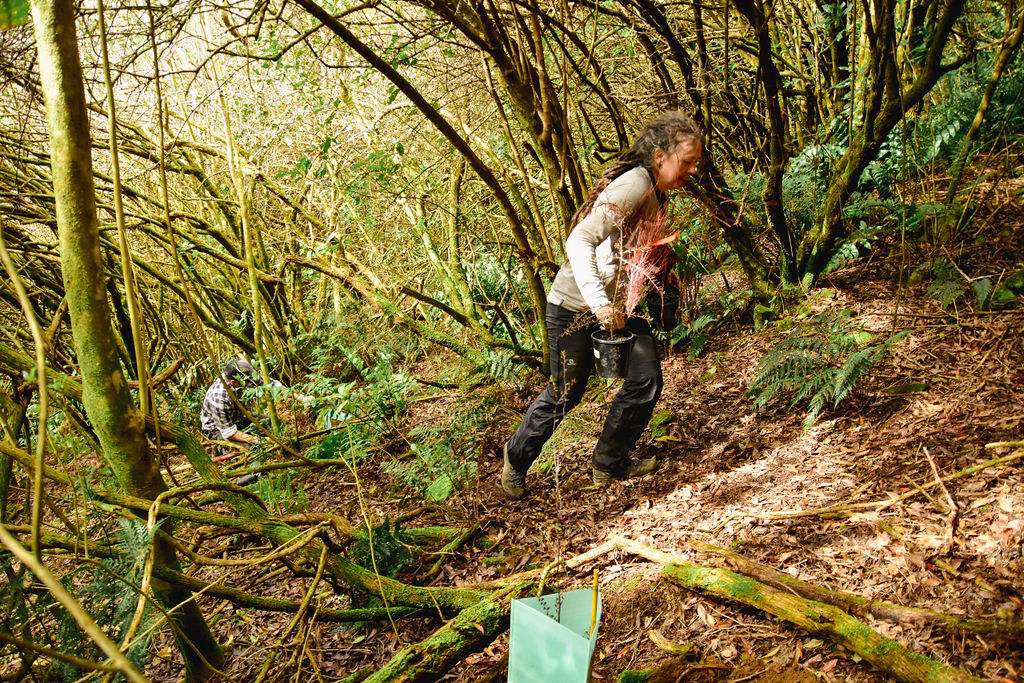
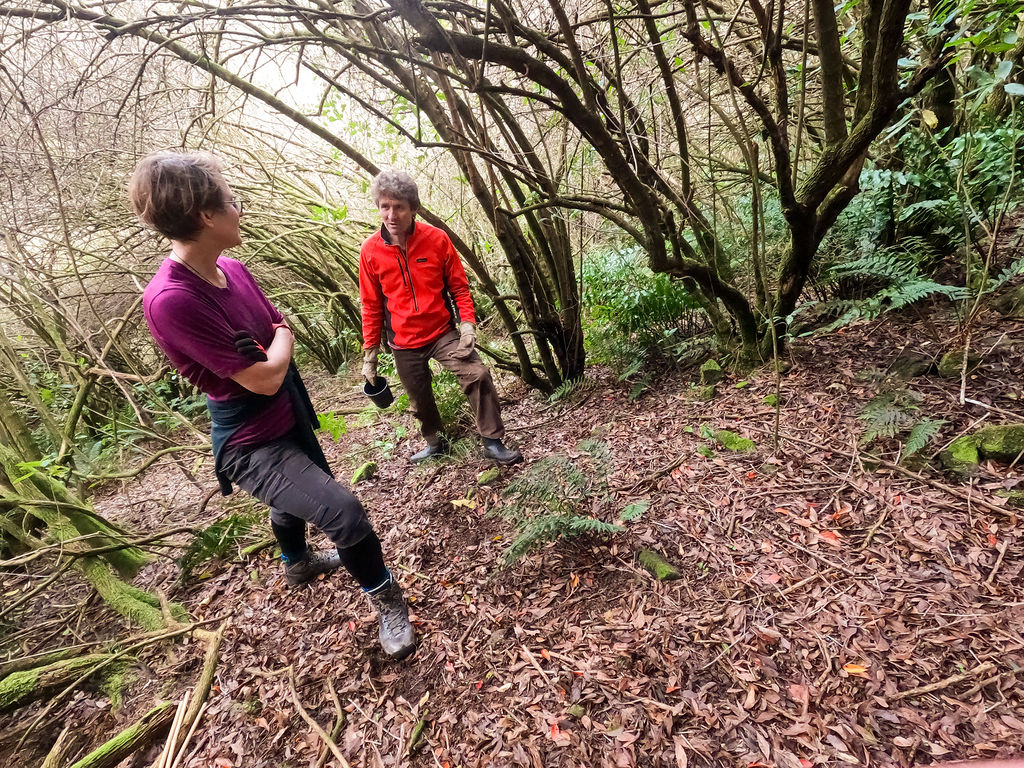
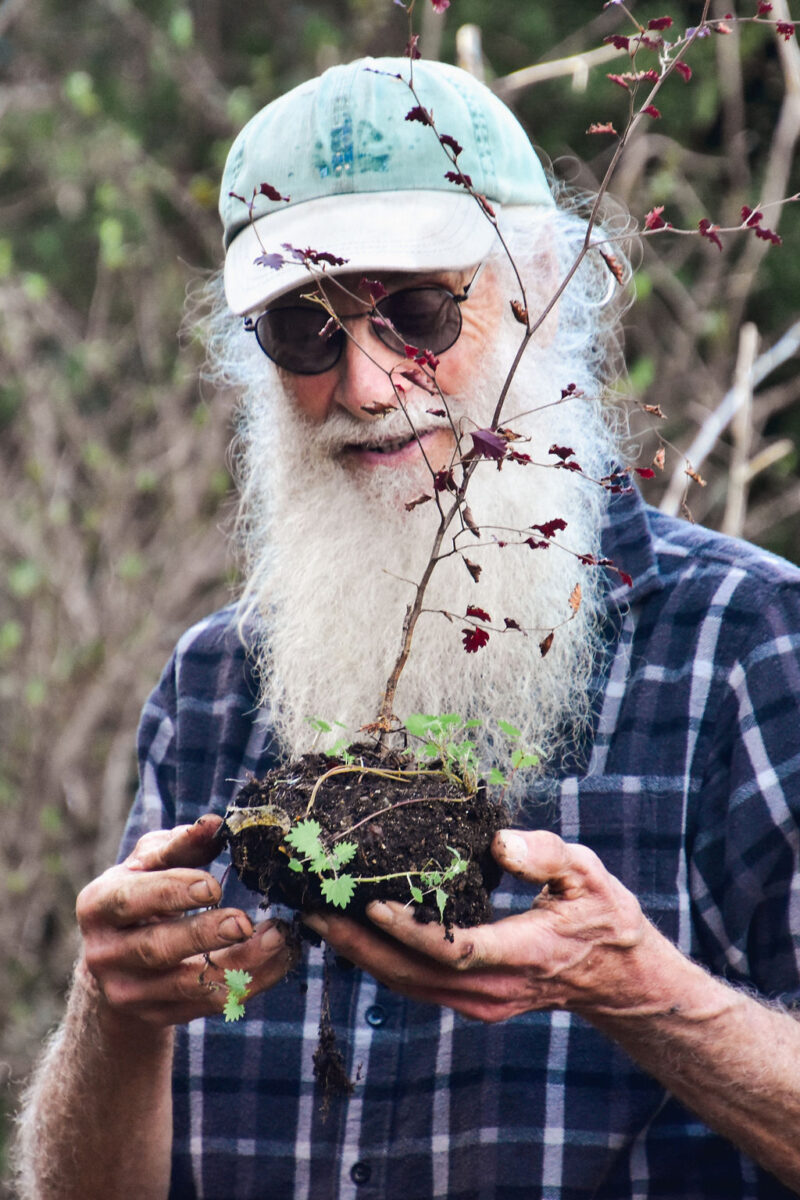
Day 2 at Project Rameka was a slightly damp affair. The rain came in the early morning and so it was a half day indoors at the ranch analysing the weather reports for any potential gap in the rain. Eventually a patch of blue sky appeared and we loaded into the cars and headed to Rameka to tick off a few jobs. The first one was selecting rocks for the trail markers to be put on the Historic Track. This will enable trail users to better report locations for things that may have happened on the track like tree fall and slips and things like that. We picked a selection of rocks from the stream near the Totara Car Park and after a lengthy Bachelor type elimination process ten were chosen to be the trail markers.
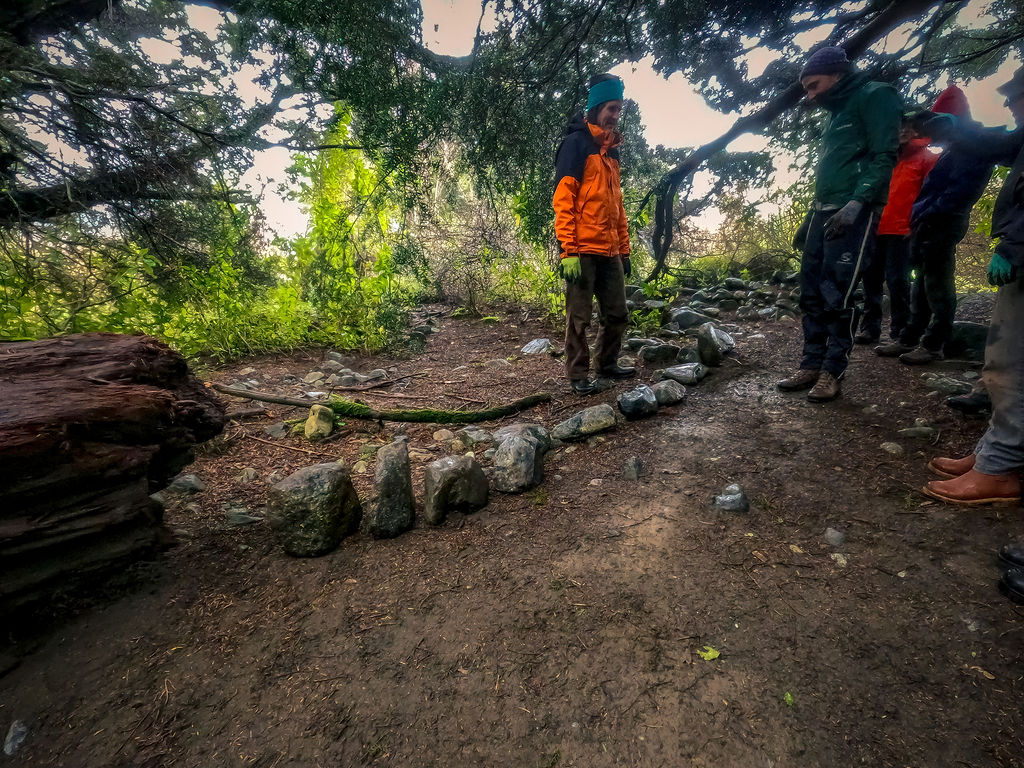
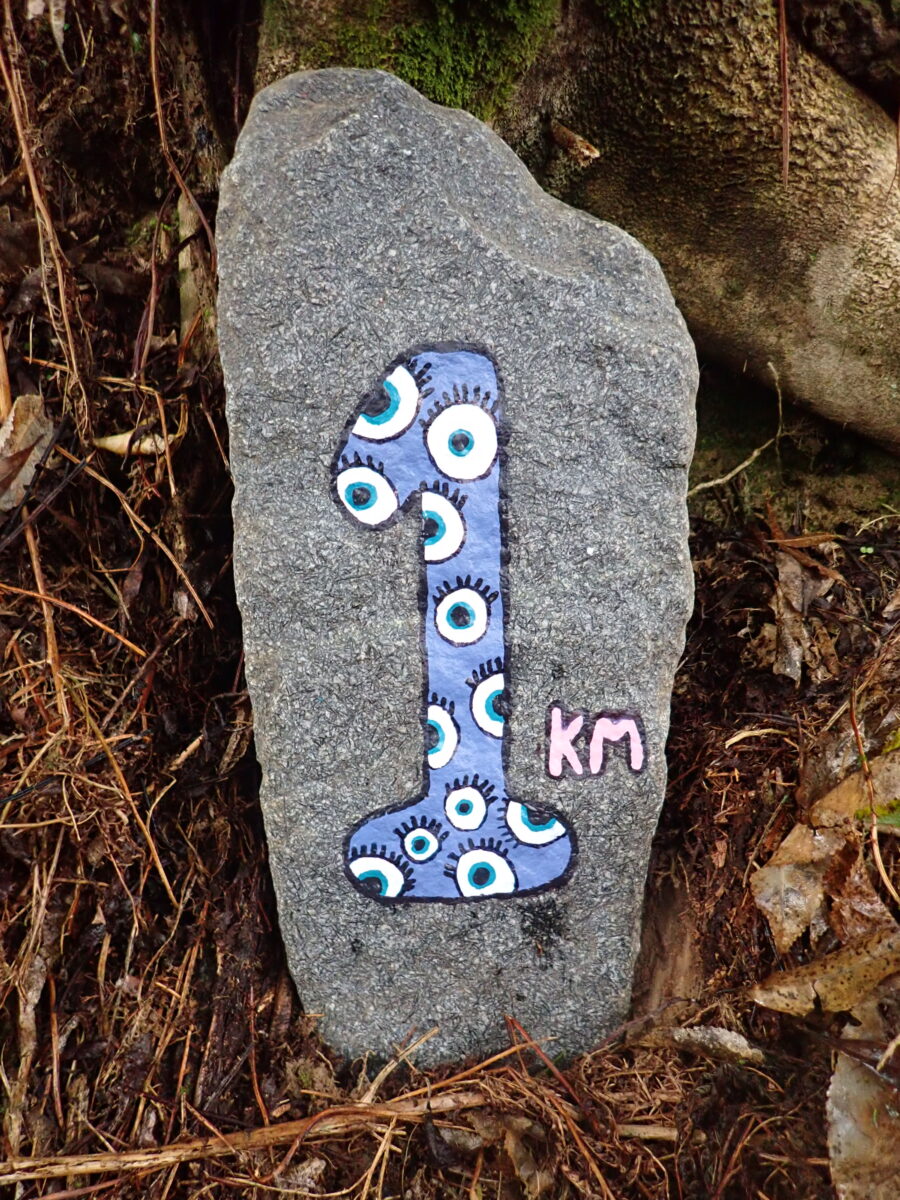
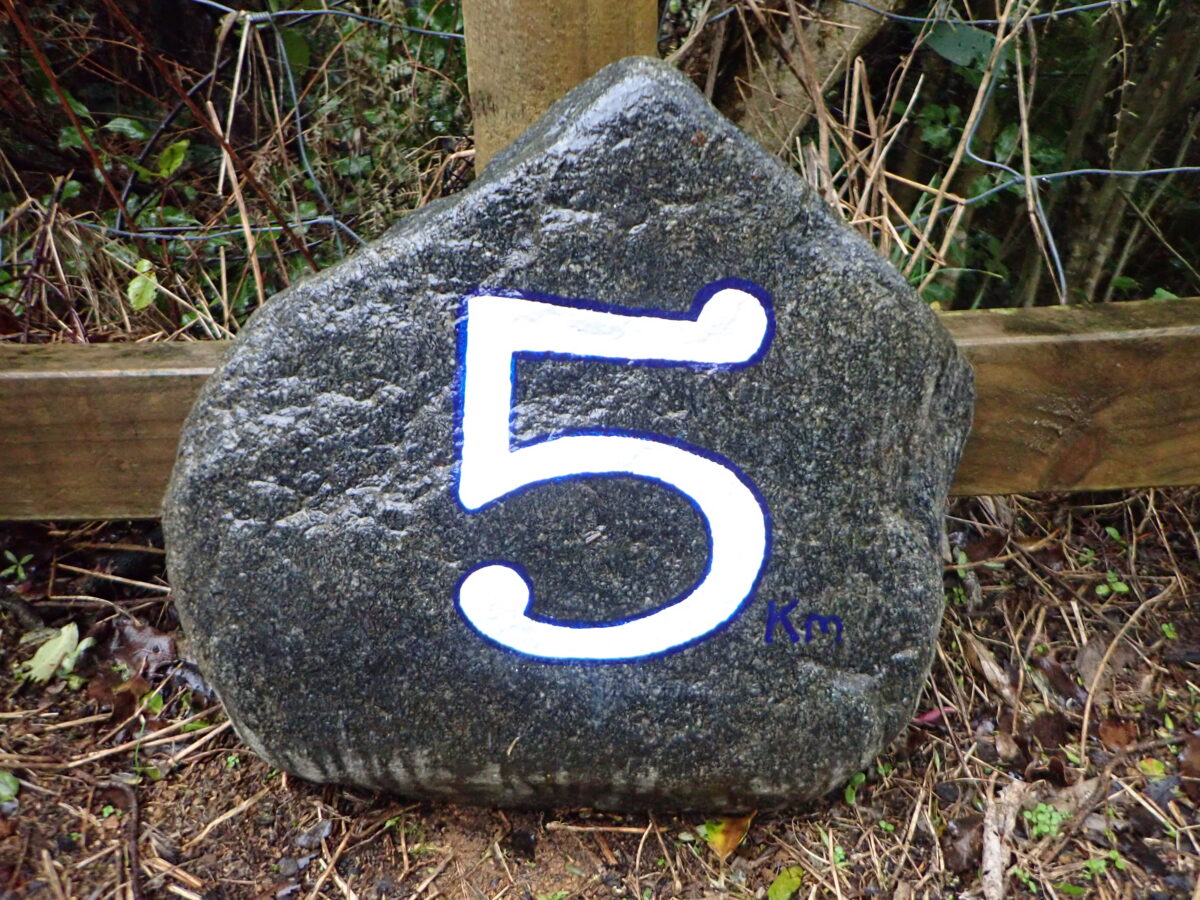
The next job was planting Nīkau along the bank of the Rameka Creek near the Old Mill Site. The creek was in full flow from the rain and the forest was quite vibrant from the rain drops settling on the leaves of all the plants. There was also some work done on the bridge across the creek and I got some cool long exposures here. Young Nīkau need really moist soil, shade and protection from the elements so this was a perfect spot for planting. They are fairly slow growing but eventually will provide flowers and fruit that will attract birds like Kererū and maybe even Kākā! (There are Kākā in the Abel Tasman which is very close by so it could happen!) After a break for lunch the rain set in again and the last plants were planted and then we headed back to the house to dry off. I went back later on in the afternoon with Ann-Louise to load up the rocks and bring them back to dry out. Strength training for the day done 💪💪

The Sun was out for Day 3 at Project Rameka. To start with, a group of us ventured down to the spur on the Great Expectations track to release trees from the plant guards. This site was one of the main planting sites in 2023 and it was amazing to see the progress of the trees there. The plant guards are put in place to protect the trees from weather and animals and can come off when the trees are about 1m high. The site here on either side has a lot of gorse which I think had a big impact on the growth of some of the seedlings, certainly the ones closest to the gorse were much larger most likely having had a little more protection from the elements. I wasn’t a very good tree releaser in all honesty but it did occur to me I could recreate some of the shots I took last year to see the difference in growth, so I did my very best to do that. I also got a tad excited by the keas calling each other and taking flight around the trees …
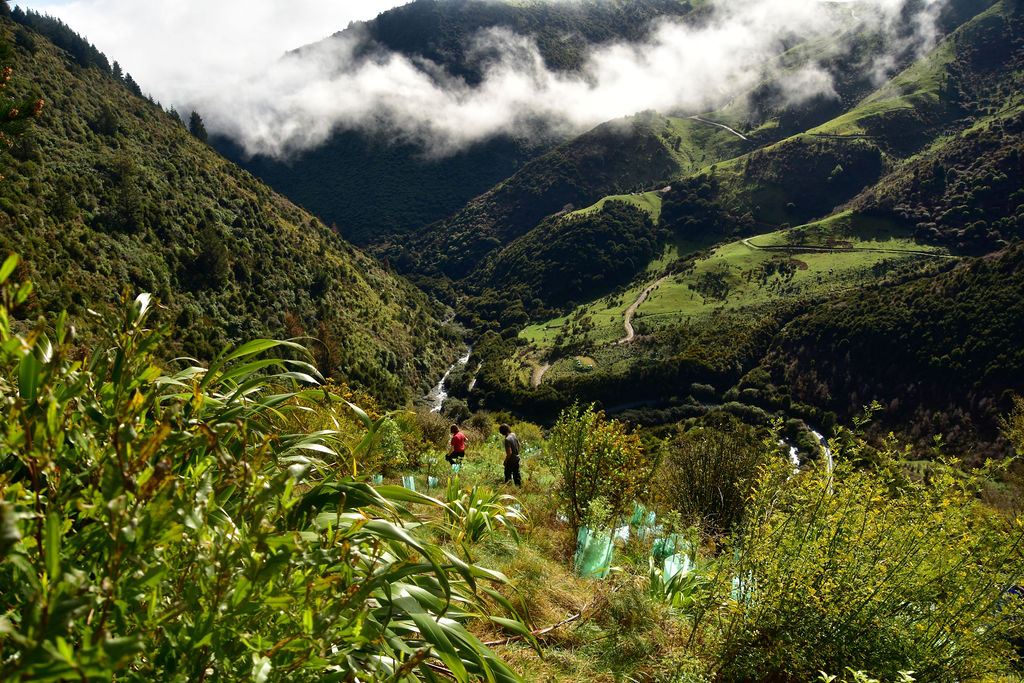
After lunch I headed back down to the spur to install the Solar Can with Richard. The Solar Can is a pinhole camera that will take a exposure of the path of the sun. Hopefully it can stay up long enough to capture the summer and winter solstices which should create some awesome effects. I say that with some trepidation though, as I am writing this I certainly hope it is still in one piece given its proximity to the local kea hangout. Richard climbed up one of the pine trees and cleared away some branches to mount the can onto the tree and we used the GoPro to give us an idea of what the angle would look like. I can’t wait to experiment more with the Solar Can and really loved the short exposures I got with the puck while I was there. I think it’s such an interesting form of photography.
After the installation was completed we headed down the track to the planting site from the first day where the rest of the group had been cutting back some of the barberry to let more light in for the seedlings. After a bit of time here getting some monitoring photos my ride was leaving so I had to go, but it had been a productive day all round!
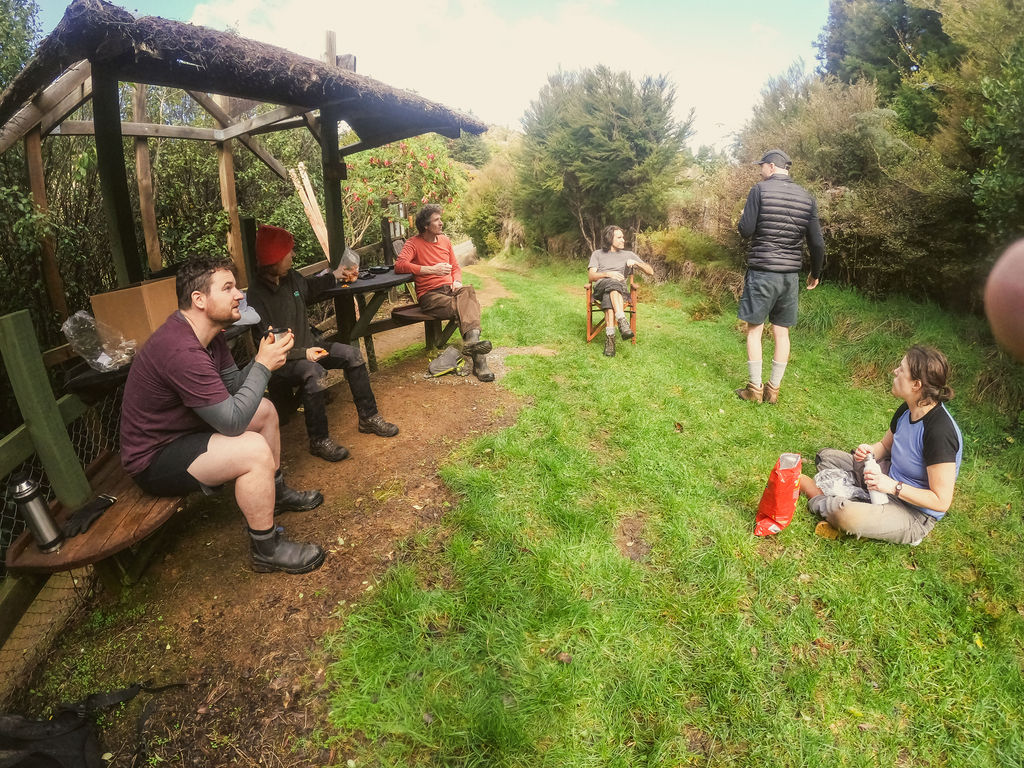

Day 4 at Rameka was another scorcher and plenty of work to be done around the place. Today we focused on planting at various places at the top of the road and the driveway. Before we cracked into it I quickly made my way down to the GE Spur to see if the Solar Can had survived the night. Phew what a relief it was still there in one piece. The first lot of today’s planting was just down a bank off the gravel road. I actually mucked in and got my hands dirty here and planted some Rimu, a Totara and a Miro then my shovel disappeared so I helped the resident Weka inspect everyone’s work and I was also pretty good at delivering some of the supplies down to the planting areas thanks to my handy quiver.
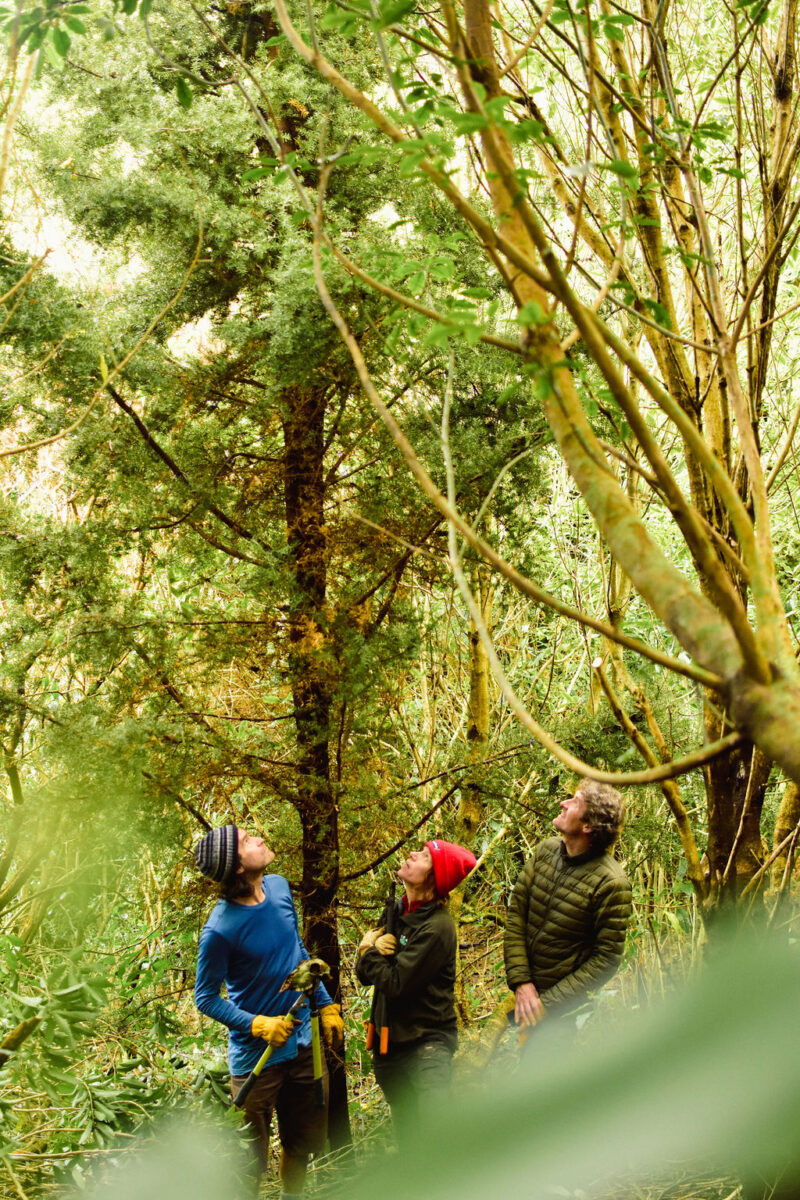
The next area of planting was along the driveway up to the huts. I planted a couple of Rimu here and did the plant guards for some of the Rimu and Beech further up. I had a great conversation with Paul who gave me some tips to remember the different trees. So Totara is the spiky one, Miro looks similar but the leaves are flat and he remembers it by saying Miro Miro/Mirror Mirror (because a mirror is flat) then for Mātai it’s like you look at it and go “what’s the mātai (matter) with you” because mātai grow outwards and look kinda weird. I thought it was a really cool way to remember things anyway. Paul is an avid tramper and clears a lot of the traps around Project Rameka. By keeping pests out it helps the native birds and trees thrive.
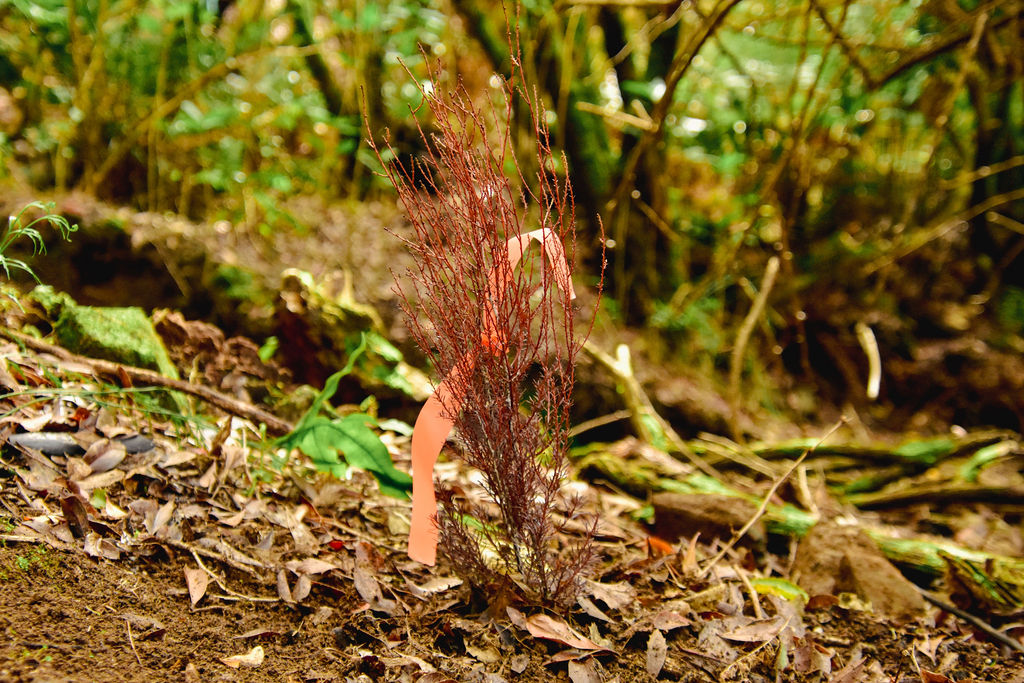
After a bit of tidying up, Jonathan wanted to show us one of the first sites they had planted back in 2009 which had seen some amazing growth. Thinking back to the photos that showed the whole area used to be pasture it was really awesome to walk amongst the Totara that had grown so tall. The largest Totara was about 8m high with many more scattered around. The crew got to work cutting back some of the mahoe to let some light into this area for the smaller trees. Amazing to think some of those tiny plants will grow to this size and even bigger over time.
